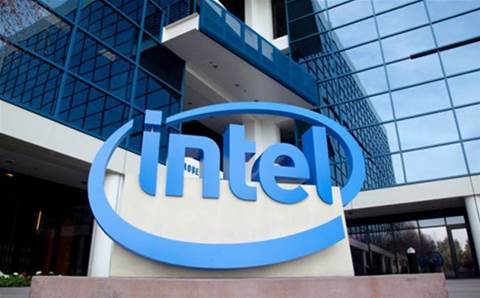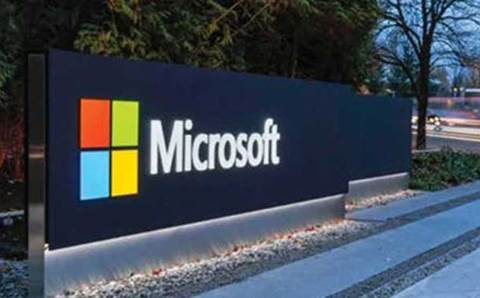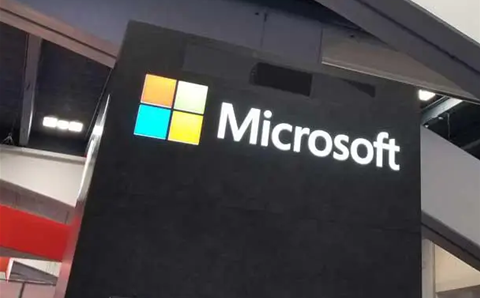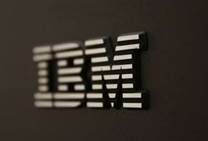Intel's booming data centre business has catapulted Intel as "the rising force of the data revolution across different industries," CEO Brian Krzanich told investors on the company's second quarter earnings call Thursday.
"We're seeing that the data centre continues to be a great growth engine for the company," Krzanich said.
"I'm very pleased with our product and I'm more confident than ever in Intel's growth. In Q2, we extended our leadership with new breakthrough products in client computing, data center and memory... that reset the bar for performance leadership, and we’re gaining customer momentum in areas like AI [artificial intelligence] and autonomous driving."
Overall, the chip giant posted earnings of US$2.81 billion or 72 cents a share for the second quarter ended 1 July on overall sales of US$14.8 billion, about 9 percent higher than the US$13.4 billion reported in the same quarter a year ago.
That revenue beat the outlook of analysts polled by Thomson Reuters, who predicted earnings of 68 cents per share on sales of US$14.41 billion. Intel's shares were up 4 percent at US$36.17 in after-hours trading.
Partners were excited when Intel in July rolled out its new Xeon scalable server processor platform, which is aimed specifically at data centre applications with the new mesh-based Purley architecture to reduce latency at high core counts.
"The initial reaction to Xeon scalable has been extremely positive... it's the largest performance improvement in a decade gen-to-gen, so we're seeing a very large ramp in the second half as we move forward with this product," said Krzanich.
Intel's Data Centre Group, which the company said now accounts for more than 40 percent of its total revenue, grew 9 percent in the second quarter of 2017 to US$4.4 billion. Looking ahead, Krzanich said the company's data centre business remains on track to reach "high-single-digit" growth for the year.
Intel's Client Computing Group sales also grew in the second quarter, increasing 12 percent to US$8.2 billion. Intel has also been focusing on budding opportunities in the enthusiast market segment as part of its overall PC strategy – in the spring, the chip giant launched its Core X platform to equip gamers in the enthusiast segments with extreme performance and mega-tasking capacities.
Meanwhile, revenue from Intel's Internet of Things Group shot up 26 percent to US$720 million in the second quarter, while its Non-Volatile Memory Solutions Group sales grew 58 percent to US$874 million.
"We feel great about where we are relative to our three-year plan and heading into the second half. Intel’s transformation continues in the third quarter when we expect to complete our planned acquisition of Mobileye,” said Intel CFO Bob Swan on the earnings call.
In 2016, Krzanich shocked the industry with the news of massive layoffs and a major restructuring initiative to tighten the company's focus on "areas of growth." The company said it would cut 12,000 jobs globally - about 11 percent of its workforce – as well as restructuring to pivot its focus from the PC market to the lucrative data centre and IoT markets.
As part of these "areas of growth," Intel has invested in new businesses. In March, the company launched a new Artificial Intelligence Group, which it said would align resources including engineering, labs, software and other products, to build out its AI portfolio under vice president and general manager Naveen Rao. In January Intel also unveiled the Go Automotive 5G Platform, the industry's first 5G-ready test platform for the automotive industry.
These new investments, as well as those in IoT, flash memory and cloud, are paying off, said Patrick Moorhead, president and principal analyst of Moor Insights and Strategy.
"All in all, this was a very solid quarter and gives indications of some many positive things for the future for Intel," said Moorhead in an email exchange with CRN USA. "Intel had a very good Q2. What struck me was the diversity of their revenue and their ability to grow in areas where many doubted they could see a lot of growth or success."





.png&h=142&w=230&c=1&s=1)
.png&h=142&w=230&c=1&s=1)



.png&w=100&c=1&s=0)




.png&h=298&w=480&c=1&s=1)






